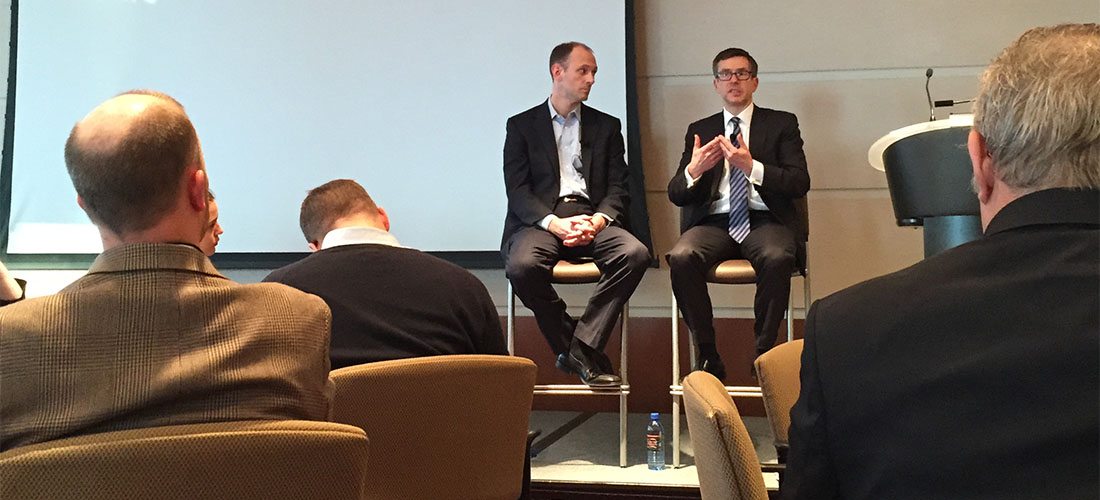By Lucy Ren and Ryan Sachetta
The Federal Reserve is unlikely to raise interest rates before its September meeting and instead will wait into the summer to get a better assessment of the economy before making any decisions, according to two University of Chicago economists.
Former Federal Reserve governor and University of Chicago professor Randall Kroszner and University of Chicago economics professor and former chairman of the Council of Economic Advisers Austan Goolsbee spoke in a wide-ranging discussion on the economy Thursday evening.
Factors such as low inflation, employment and uncertainty abroad will continue to influence the Federal Reserve’s thinking, Kroszner said at the opening reception of the 52nd Annual Conference for the Society of American Business Editors and Writers at the University of Chicago’s Gleacher Center.
“I don’t see why the Fed would move early rather than wait a few months to see the economic situation,” Kroszner said.
The Federal Open Market Committee will meet Tuesday and Wednesday, and the Commerce Department will release its first estimate of first-quarter economic growth on Wednesday. Real GDP is expected to rise by 1.25 percent for the quarter ended March 31, compared with 2.2 percent in the fourth quarter, according to survey conducted by Bloomberg.
I don’t think it’s any surprise that we get housing coming back less strong than it was.
– Austan Goolsbee
There is a chance that the upcoming GDP numbers could “really stink up the joint,” Goolsbee said.
For Goolsbee, economic growth expectations need refreshing. He pointed to the housing market as one example. In the 107 years of home price data, prices appreciated slowly and steadily, increasing 40 basis points a year. Home prices then shot up, growing 13.5 percent a year and reaching an apex in the mid-2000s. Prices are slowly recovering but there are still more than 6 million vacant homes in the U.S., he said.
“I don’t think it’s any surprise that we get housing coming back less strong than it was,” he said. “If you have something growing at 13.5 percent per year, it solves every problems you could ever have. Do you think we’re going back to 40 basis points a year or the go-go days?”
In discussing the labor market, Goolsbee and Kroszner agreed that education and skills are paramount for young people, with statistics pointing to the pair leading to higher incomes and lower unemployment.
To Goolsbee, a shrinking labor force is the new reality despite an “epically good year for the job market” in 2014. The question is why GDP didn’t correspond to growth in the job market. “In my opinion, the only reason we were able to have that differential is because we had negative productivity growth,” Goolsbee said.
Near the end of the evening, an audience member asked Goolsbee what, in hindsight, he would change about the White House’s recovery efforts. “I said when we got there in 2009, it felt like running into a hotel on fire, grabbing kids and throwing them into the pool,” he said. “Now, we are looking back and judging it like it was an Olympic diving contest.”

